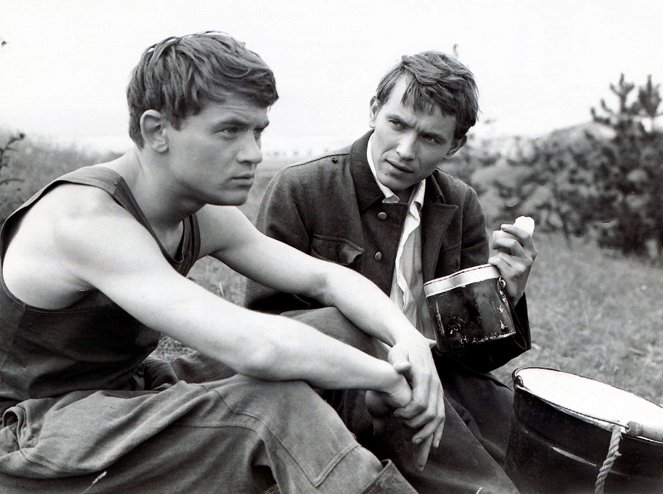Photographie:
Tamás SomlóMusique:
Zoltán JeneyActeurs·trices:
András Kozák, Sergey Nikonenko, Lajos Őze, József Madaras, Béla Barsi, János Görbe, Zoltán Gera, Mari Csomós, Bertalan Solti, Tibor Molnár (plus)Résumés(1)
Seventeen-year-old Jóska is captured by the Soviet in the last days of World War II. He is posted to a soldier lad to help him guard the cowherd. Jóska tries to escape, Kolja keeps him from entering the mined area using his gun. Despite their opposed position and language barrier a friendly relationship is formed between them. They feast on the meat of the exploded cow together and chase girls when Kolja suddenly dies of a former injury. Jóska tries to get to the station dressed in his uniform. Some of the former POWs recognize him and thinking that he was a collaborate they beat him up thoroughly. (texte officiel du distributeur)
(plus)Critiques (2)
In terms of composition, a non-classical presentation of great humanistic ideas that should be no problem for the perceptive viewer to tune in internally. Sometimes, it’s difficult to tune in to Janscó's directorial style, which loosely connects a series of events without addressing the larger plot (though not nearly as much as in The Red and the White, where the connecting element of the protagonist was not even present), but still, it’s impossible to imagine any other filmmaker capable of conveying a similarly poetic view of the shape of humanity in the midst of a serious conflict. Jancsó manages like few others to relegate all the most pressing horrors to off-screen space or to the background of the mise-en-scène, so as not to disturb the continuity of the editing and at the same time to preserve their unpleasant effect. 80%
()
Un jeune lycéen se promène à travers le pays récemment quitté par la guerre, mais l'armée est toujours là. On peut dire que sa jeunesse héroïque l'empêche de dire adieu à la guerre, comme s'il était tiraillé entre le désir d'arriver chez lui en sécurité et de participer à cette entreprise d'hommes véritables (comme lorsqu'il enfile un uniforme abandonné - est-ce parce qu'il a froid ou parce qu'il souhaite justement être considéré comme un soldat, même s'il sera certainement capturé ?). Ensuite, il est capturé par l'armée d'occupation. Il se comporte comme un vrai soldat et un Hongrois. Il essaie donc de s'échapper des Russes, ou plutôt du Russe. Mais ensuite, les scénaristes et le réalisateur montrent un exemple de réconciliation universelle. La loi dictant le comportement du jeune homme change. Il ne doit plus agir comme un Hongrois, comme un soldat (ces catégories qui divisent et généralisent les gens, qui sont hétéronomes), mais comme un être humain. Et un véritable être humain aide les autres, peu importe leur nationalité ou leur uniforme. Le directeur de la photographie Tamás Somló s'est de nouveau montré dans toute sa splendeur.
()

